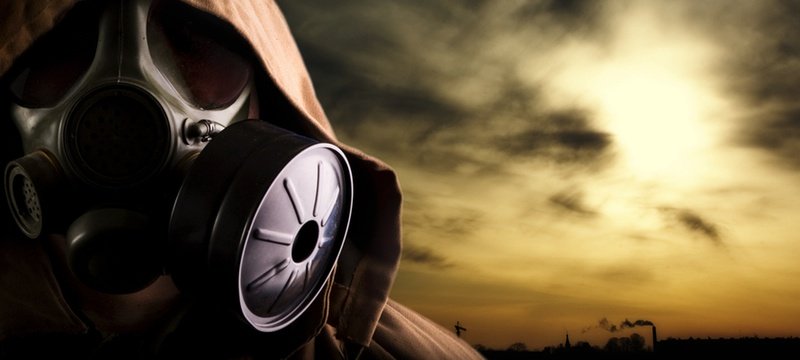Here, we will particularly look into the harmful effects that industrialization caused on ecosystems and man, on a global scale.
We currently live in a society that, though indeed awakened to environmental issues, arguably based on industry its economic growth and development of quality of life of the populations.
Meet the eleven worst environmental disasters that had greatest impact on the world that surrounds us.
11. Three Mile Island
On July 10, 1976 in Seveso in northern Italy, there was an explosion in a chemicals products factory, casting a kind of a cloud composed of dioxins, that covered the entire city.
Initially, the population paid no attention to the event. The first results were observed in the animals who began to die gradually and quickly.
A farmer found his dead cat, but when he saw the state of deterioration of the animal in just one day, triggered the agencies responsible, who found that the decomposition of the animal was identical to an acid attack, leaving only his skull.
Two days later, the effects on humans were reported: skin wounds, disfigurement, nausea and blurred vision.
8. The Aral Sea
That which was once the 4th largest salt water lake in the world, located in Central Asia, Today is sort of a “graveyard of ships”.
Due to the economic crisis facing the region, it was abandoned, leaving a broad trail of impact, causing desertification of the place.
The region is also heavily polluted, with serious public health problems as a consequence.
Currently Kazakhstan is trying to overcome the disaster, but expectations are discouraging because of the magnitude of interference that was there, being considered one of the greatest disasters made by man today.
7. Nuclear Plant Tokaimura
On September 30, 1999 in the northeast of Tokyo, workers of a uranium processing plant, were handling a radioactive liquid solution, when occurred an accident that exposed hundreds of people to different levels of radiation.
In a question of minutes, the workers who were nearest the local had nausea, and burns on the face, hands and other body parts.
6. The Exxon Valdez
On March 24, 1989, an single hull oil tanker named Exxon Valdez stranded in Alaskan waters, dumping 10.8 million gallons of crude oil into the ocean, which quickly spread about 500 km, killing thousands of animals.
About 11,000 people and 1,000 vessels were mobilized to contain and reverse the impact, but with a sad and deplorable result.
5. Love Canal
In 1978, in a small village in the state of New York, tons of toxic waste began to bubble in backyards, basements and sewer systems of the houses.
The problem occurred because of 21,000 tons of toxic industrial waste that had been buried by a local company in the 40s and 50s. Hundreds of families abandoned the place, some of them showing signs of intoxication.
4. Burning oil in Kuwait
In 1991, motivated by political issues and territorial disputes, Saddam Hussein lost the territory of Kuwait.
In response, he ordered his men to invade the region, in order to blow up the oil wells.
Releasing a poisonous smoke cloud in the Gulf, with soot and ash, creating the infamous “Black Rain”, forming oil lakes. Thousands of animals died intoxicated.
3. Bhopal
On December 2, 1984, an accident at a pesticide factory of a known Corporation in Bhopal, India, released 45 tons of methyl isocyanate into the atmosphere.
Within hours, thousands of people died, and in the following months, many more lost their lives due to complications caused by contamination.
15,000 deaths were recorded, approximately.
But in total, about 500,000 people were affected (blindness, organ failure, bad formations in fetuses and birth defects). Population still suffers from the effects.
Even today the survivors of the disaster and health agencies in India have failed to get the company information on the composition of the leaked gases and their effects on health.
Despite this absurd picture, the plant remains abandoned since the toxic explosion, while dangerous waste and contaminated materials are still scattered around the area, contaminating soil and groundwater in and out of the old factory.
So far the company hasn’t compensated the hundreds of thousands of people.
2. Chernobyl
On April 26, 1986 in Chernobyl, Ukraine, happened what is considered the worst nuclear disaster in history.
One of the reactors at the nuclear power plant installed on the local exploded, releasing huge amounts of radiation into the atmosphere, spreading throughout Russia and parts of Europe.
The number of people affected by the accident is incalculable.
The largest and most common consequence are the incidence of thyroid cancer in children.
